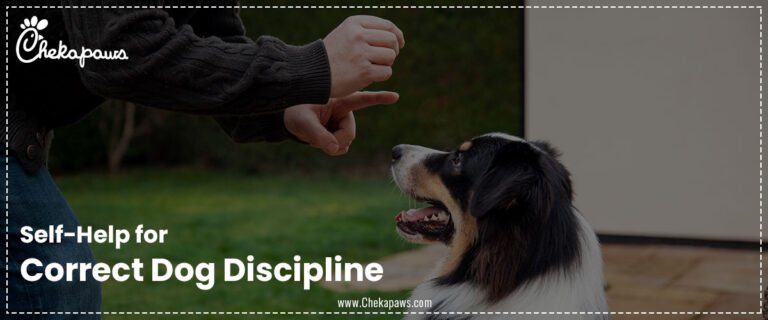Have you ever wished your dog could find your keys when you drop them, pick up your shoes, or give you the TV remote? Because of their exceptional intelligence, dogs can learn hundreds of commands, including how to pick up nearly any object. In addition to improving your dog’s obedience, teaching them to “pick anything” can also improve their mental health, your relationship, and feeling of purpose.
This guide will help you through every step of the process, whether you’re training a service dog, a competition partner, or just want a helpful canine helper around the house. It will cover everything from learning how dogs learn to teaching them the “fetch and hold” commands to teaching them to confidently and safely pick up new objects.
By the end of this guide, you’ll know how to train your dog to pick up any item you ask for — and enjoy the learning process together.
Table of Contents
Understanding the Concept: What “Pick Anything” Really Means
Knowing what you’re teaching your dog is crucial before you begin training. “Pick anything” is a series of learnt behaviours that combine to form a single trick.
When you command your dog to “pick,” he must:
Determine the object using a pointing cue or visual recognition.
Be calm as you approach it.
Gently open their mouth and take it.
Keep it firmly in place without biting or dropping it.
Give it back to you or put it in the designated spot.
Patience is essential because mastering any of these procedures may take some time. Dogs pick up new information by association and repetition. Any breed, from a Labrador Retriever to a Chihuahua, may learn how to securely pick up a variety of objects if they are properly trained.
Why Teach Your Dog to Pick Things Up?
There is much more to teaching your dog to pick things up than just convenience. It’s advantageous to you both in a number of ways
Mental Stimulation
Picking up objects tests your dog’s ability to solve problems. Their minds are kept engaged by the need to distinguish between textures, sizes, and forms.
Physical Exercise
Different muscle groups are used as you approach, grip, and retrieve objects, which enhances coordination.
A stronger connection
Collaboration training promotes communication and trust. You learn how to constructively guide your dog, and your dog learns to listen intently.
Practical Assistance
For older owners or those with mobility limitations, this order can be a game-changer for everything from retrieving dropped keys to bringing the newspaper.
Foundation for Advanced Tasks
Your dog can advance to more complicated tasks like loading laundry, putting toys away, or assisting with therapy once they are able to choose things.
Setting Up for Success
You should set up your equipment and workspace before instruction starts.
Selecting the Right Environment
Start in a space where your dog can concentrate and is free from distractions. Increase the number of distractions progressively after they have mastered the fundamentals (e.g., training at a park or outdoors).
Build Instructional Materials
You will require
- A clicker or a vocal cue that is consistently used, such as “Yes!”
- Little, expensive goodies
- A few lightweight, soft items (such as a rolled-up sock or plush toy)
- Intermediate items (soft rope, tennis ball, and plastic bottle)
- Advanced things (shoes, mail, remote controls, keys, etc.—based on your objectives)
Understand Your Dog’s Personality
While some dogs, such as retrievers, are inherently mouthy, others are more cautious. Adapt your pace to your dog’s degree of comfort. Allow their curiosity to lead them; never coerce them into grabbing something.
Teach the “Take It” Command
This works as the process’s foundation. Your dog needs to know how to respond to cues with gentleness.
How to taught “Take It”
- Start Small: Present your dog with a toy. Say “Yes!” and offer a treat when they touch it with their nose or sniff it.
- Reward Mouth Contact: After they begin to nibble or place their mouth on the object, record the action and give them another reward.
- Add the Cue: Say “Take it” just before they do when they routinely grab it. Reward each successful effort.
- Extend Duration: Before rewarding them, ask them to hold the item for a brief moment or two. Extend the time gradually.
- Adjust the Object: Play with various materials and shapes, such as a cloth, a tennis ball, or a sock. They will generalize the behavior more quickly the more variety there is.
Pro Tip: Start with safe, pliable things. Steer clear of anything small enough to ingest, metallic, or pointy.
Teach “Hold”
The next stage is to educate your dog to hold the object without dropping or chewing it, given that they know how to accept it.
How to Teach “Hold”
- Ask your dog to pick up something they feel at ease handling.
- Say “Hold” once they have it.
- Say “Give” after counting to two, then take it slowly.
- Give praise and a goodie as a reward.
Increase the duration gradually: begin with two seconds, then five, and finally ten. Remain composed and don’t reprimand your dog if they drop it early. Just restart and try again.
Pro Tip: Limit meetings to five to ten minutes. Boredom or frustration might result from overtraining.
Teach “Give” or “Drop It”
Control and safety are guaranteed by this order. Your dog has to understand when to let go of an object, particularly if it’s fragile or dangerous.
How to Teach “Give”
Give your dog a treat while they are holding the item.
Say “Give.”
Reward them right away when they release it.
Practice until they can drop without the treat acting as a lure when instructed to do so.
Later on, “Drop it” might be used in emergency situations, such as when they pick up something dangerous while out for a walk.
Teach “Fetch” and Combine Commands
Put everything your dog has learnt together now. The link between picking up and bringing back is created by fetching.
Actions to take
- Throw a toy a short way.
- Say “Fetch.”
- Urge them to retrieve it and bring it back.
- When they get to you, use “Give.”
- Enjoy sweets and accolades as you celebrate!
Do it again with different items. Making sure they can pick up and deliver products with confidence and clarity is the aim.
Teach “Pick” or “Get It”
At this point, the command can be given to any item. Your dog will be instructed to retrieve an object of your choosing using the cues “Pick” or “Get it.”
How to Teach
- Place an item (like a toy or sock) a few feet away.
- Point at it and say, “Pick!” or “Get it!”
- When your dog picks it up, use “Come” and “Give.”
- Reward heavily.
You can gradually add new items every day, such as newspapers, shoes, gloves, or tiny purses. Your dog will eventually learn that the word “pick” means to grasp whatever you’re pointing to.
Introduce Object Names
Dogs can be trained to recognize certain objects by name, such as “Ball,” “Rope,” or “Keys.”
How Item Names Are Taught
- Point to an object and firmly state its name: “Ball.”
- Give your dog praise and a treat when they contact or grab it.
- Change it up by using something else, like “rope.”
- Ask your dog to choose one or the other while you alternate between them.
Your dog is going to learn to associate the term with the item. Dozens of items can be added to this.
Varying Size, Weight, and Texture
Dogs may become anxious while handling metal or heavy objects. To help in their complete generalization
- Use light items first (sock, toy).
- Go to strange forms (spoon, bottle).
- Next, add cool textures (plastic bottles, metal keys).
- Reward each successful effort.
Safety Tip: Avoid using hot or sharp things at all times, and make sure that nothing dangerous is on them.
Teach Directional Picking
Teach your dog to bring back objects from the left, right, or behind furniture once they can do so consistently.
How to Train
- Position the item a few paces to your left.
- “Pick left!” you say, pointing.
- Give success a reward.
- Do the same with the right and the back.
This directional awareness is crucial for service training and aids dogs in difficult domestic duties.
Introduce Real-Life Scenarios
The next step is to practice “picking anything” in realistic scenarios.
- Ask, “Pick keys!” after dropping your keys on the ground.
- Say, “Pick glove!” after leaving a glove on the couch.
- Say, “Pick towel!” and place the clothes close to the basket.
The more realistic the training, the more confident and knowledgeable your dog will become.
Maintain Motivation and Avoid Burnout
Training should never be an exhausting task, it should be enjoyable.
- Sessions should be short and constructive.
- Make use of high-value incentives, such as cheese, little bits of chicken, or their preferred toy.
- Sessions should end on a positive note, not with a failure.
- To keep your dog from becoming bored, switch up the objects.
- Give your dog a rest if they appear irritated. It takes some dogs a day or two to become proficient in every phase.
Troubleshooting Common Problems
Dog Refuses to Pick Up the Object
Try combining the scent with softer, more recognizable objects. Reward even minor accomplishments, such as touching or sniffing.
The dog lets it go too soon
Work on “Hold” independently. Only when they hold on for the desired amount of time should you give them goodies.
The dog shakes or chews the object
By rewarding quiet holding, you can redirect energy. Steer clear of rough play when you’re training.
Dog Is Confused by Objects
Reduce the number of elements in the name training. Before combining them, practice each name separately.
Advanced Level: Picking Anything on Command
When your dog is trained in all the fundamentals, it’s time to improve the behavior so they can select any new object.
Methods:
- Show off an unknown object, such as a pen or cap.
- Point and give the “Pick” signal.
- Reward grabbing or touching attempts.
- Every day, practise with new objects until your dog uses the same reasoning without prompting.
Your dog may now confidently and gently handle a range of materials, including paper, plastic, cloth, and rubber.
Teaching Your Dog to Pick and Place
Take it a step further and train your dog to put the object in a designated location, such as a basket with toys.
Steps
- Keep the basket close to your canine.
- “Drop it in!” you say as they let go of the toy.
- Give a reward.
- To get them to walk over and drop it in, gradually increase the distance.
- This may develop into comprehensive tasks like:
- grabbing toys.
- bringing the mail in.
- assisting with cleanup following fun.
Breed Considerations and Adaptations
Although all dogs are capable of learning, several breeds are better suited for recovery by nature:
- Collies, Retrievers, and Spaniels: They learn best by instinct.
- Use lighter things for small dogs. Modify the distance and height.
- Select items that will fit easily in the shorter snouts of brachycephalic breeds, such as pugs.
- Encouragement is more important than expectations, regardless of the breed.
The Role of Positive Reinforcement
Reward actions you like to see repeated at all times
- Clickers for accurate timing.
- oral commendation (“Good pick!”).
- Tactile incentives, such as belly massages and soft pet care.
Avoid punishment, it will only cause confusion. Instead of reprimanding your dog for not understanding, make the work simpler.
The Science Behind It: How Dogs Learn Tasks
Operant conditioning is how dogs learn; when a behavior is rewarded, it is more likely to be repeated.
Additionally, they create association memories by associating cues such as “Pick” with both the activity and the reward.
According to neuroscientific research, positive reinforcement training raises dopamine levels in dogs, which makes learning fun and strengthens their handler’s trust.
Building Lifelong Skills
The possibilities are infinite once your dog learns to pick anything. You may guide them in
- Bring your slippers and pick them up.
- Give the leash to you.
- Get the groceries.
- Bring a phone or some medication.
- Select toys and put them in containers.
In addition to making your life easier, these kinds of activities provide your dog a sense of accomplishment and purpose.
Safety Tips
Don’t let your dog handle anything hot, poisonous, or sharp.
- Avoid anything little that could be swallowed.
- You should always keep an eye on new items until your dog is completely trained.
- Stop the lesson right away if your dog exhibits any signs of stress or fear.
- Obedience must never take precedence over comfort and safety.
Maintaining the Skill
- “Pick anything” requires consistent practice, just like any other ability.
- Every day, spend five to ten minutes reiterating commands.
- Ask for pick-ups at random times in daily life (e.g., “Pick sock!”).
- Treats are sometimes used as rewards to maintain motivation.
- Positive reward and regular practice are essential for dogs’ success.
Emotional Benefits for Your Dog
Additionally, training improves your dog’s emotional well-being
- Increases self-confidence by achieving success.
- Lessens worry and boredom.
- Enhances their relationship with you as a reliable mentor.
- A dog that feels appreciated and understood is a more contented and peaceful friend.
Conclusion
One of the most useful and satisfying commands you can teach your dog is to pick anything. The rewards are worthwhile, but it takes time, perseverance, and a lot of encouragement. In the end, you’ll have a confident, intelligent, and helpful dog that can aid you in many ways.
Keep in mind that each dog learns differently. Honour every advancement, no matter how tiny. “Pick!” will become instinctive with time, and you’ll have a four-legged friend that is always willing to help.
Your dog will develop into a genuinely competent friend who is prepared to help you in daily life with love, trust, and constant training.







